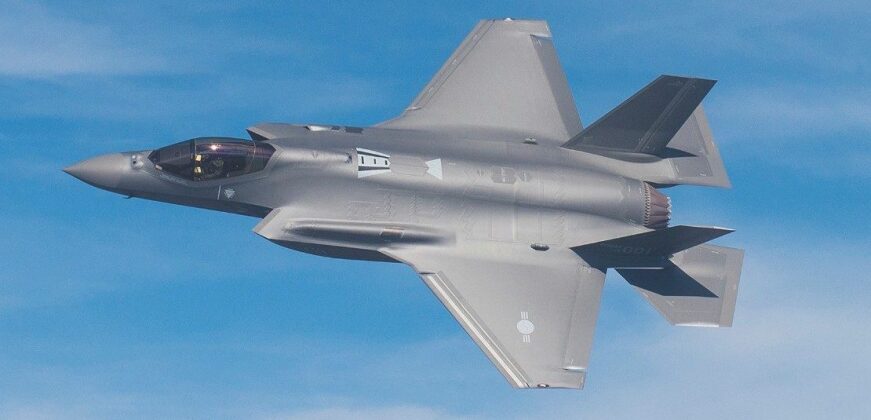News
Only 30% of American F-35s Are Fully Mission Capable: Program Chief Slams ‘Unacceptable’ Fleet Performance
The U.S. Military’s fleet of F-35 is reportedly suffering from very lower availability rates due to a range of maintenance issues and performance defects, with the manager of the fighter program Air Force Lieutenant General Michael Schmidt reporting that only around 30 percent of the aircraft in service are capable of flying all their missions. Schmidt’s written testimony to the House Armed Service Committee stressed that “this is unacceptable,” in the latest of a series of now well over 100 scathing criticisms issued by both military and civilian officials. Thus while around 540 F-35s are in service across the Air Force, Navy and Marines, only around 160 are fully mission capable placing availability rates among the very lowest in the U.S. Military – rivalled only by those of the fighter’s heavier counterpart the F-22 which has consistently been in the lead for poor availability due to even more serious maintenance issues. As a relatively light single engine fighter, the F-35 was designed to have modest maintenance requirements and operational costs allowing it to easily replace the Air Force’s F-16 Fighting Falcons and the Navy’s F-18 Hornets, but the aircraft grew heavier and more complex during its design phase as the program suffered from cost overruns of close to $150 billion. The latest result of this is that the F-35 is expected to require a new engine, with the existing F135 having been designed when the fighter was projected to be much smaller and lighter fighter. Issues with the F-35 are currently a leading cause of low availability rates as well as performance issues and overheating.

The F-35 is one of just two fighters of its generation both introduction and fielded at squadron level strength today alongside the much larger twin engine Chinese J-20, with which it had its first encounter confirmed in March 2022. The fighter program has faced harsh criticism for over a decade, with the last holder of the post of Secretary of Defence under the Donald Trump administration, Christopher C. Miller, referring to the program as a “monster” the military had created and to the fighter itself as “a piece of…” Former Senate Armed Services Committee Chairman John McCain previously called it “a textbook example’ of the country’s ‘broken defence acquisition system,” stressing in a briefing to the Senate: “the F-35 program’s record of performance has been both a scandal and a tragedy with respect to cost, schedule and performance.” On the basis of its serious shortcomings the F-35 has been very harshly criticised by sources ranging from individuals such as the Pentagon’s chief weapons tester Michael Gilmore and Marine Captain Dan Grazier, to military think tanks such as the NSN and the RAND Corporation, and organisations such as the Project on Government Oversight. The Pentagon has repeatedly highlighted that the fighter suffers from poor reliability and that its high operational costs could make it unaffordable to acquire in the numbers initially intended, with technical challenges repeatedly delaying the granting of approval for full scale production. The U.S. Air Force is has considered deep cuts to F-35 orders, with orders for 2023 notably having seen a 35 percent cut over the previous year.

Issues with the F-35 have been far from restricted to the American fleet, with the South Korean National Assembly’s National Defence Committee revealed in October to have found the country’s F-35s suffered from 234 flaws over 18 months from January 2021 to June 2022. These included 172 ‘non-flying status’ and 62 ‘cannot perform specific mission status’ cases, with the 117 flightless and 45 mission specific failures that occurred in 2021 seeing little improvement in the first half of 2022. The fighter’s suitability for combat in the event of war on the Korean Peninsula was seriously questioned by officials at the time. More recently in December, amid ongoing preparations for contingencies for attacks on Iran which were to be spearheaded by F-35s, the Israeli Air Force was forced to ground its entire F-35 fleet due to performance issues. This also came as Israel’s primary regional adversary Iran is reportedly set to receive Russian ‘4++ generation’ Su-35 fighters within months which are considerably more sophisticated than Israel’s older F-16s and F-15s, making improvements to the reliability of the F-35 fleet particularly important. F-35 shortcomings are most dangerous for the U.S. and it’s allies in East Asia, however, due to the advanced capabilities and rapid expansion of the Chinese fifth generation fighter fleet which currently centres around the J-20 program, with the F-35 and J-20 in many respects considered in a league of their own for their advanced avionics.












